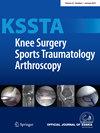Artificial intelligence-assisted analysis of musculoskeletal imaging—A narrative review of the current state of machine learning models
Abstract
The potential of Artificial intelligence (AI) is increasingly recognized in musculoskeletal radiology, offering solutions to challenges posed by increasing imaging volumes and fellowship trained radiologist shortages. The integration of AI is not intended to replace radiologists but to augment their capabilities, improving workflow efficiency and diagnostic accuracy. This narrative review examines the current landscape of AI applications in musculoskeletal imaging, focusing on both general-purpose multimodal models and specialized foundation models. AI has proven effective in musculoskeletal imaging, enhancing fracture detection, scoliosis assessment, and lower limb alignment analysis. In osteoarthritis, AI aids early detection by identifying subtle structural changes. AI-accelerated MRI reconstruction reduces scan times by up to 90% while maintaining diagnostic quality, improving efficiency and accessibility. Emerging multimodal models further integrate imaging with clinical data, advancing precision medicine. Technical challenges persist, particularly in addressing motion artifacts and anatomical complexity. Ethical considerations, including data privacy, algorithmic bias, and model transparency, remain crucial for responsible implementation. While challenges remain in clinical validation and implementation, the combination of broad and narrow AI models shows promise in advancing precision medicine and democratizing quality care.
Level of Evidence
Level V.





 求助内容:
求助内容: 应助结果提醒方式:
应助结果提醒方式:


